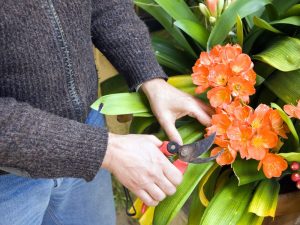Last Updated on February 14, 2024 by teamobn

Nature-loving homeowners like to put out feeders and plant certain flowers and shrubs, to lure birds into their backyards. That’s because birds not only lend more vigor and melody to the life of a garden, but they are also responsible for pollination and pest control. We now face a dilemma where we want ways to keep birds away without harming them.
Indeed, birds-caping – or designing your garden to entice local birds – has become increasingly popular among home gardeners these days.
But not every gardener wants birds sauntering onto their garden plots. Pigeons will devour entire heads of cabbage in the afternoon. Crows destroy corn crops by the acre in the countryside, and bluejays will loot your berry bushes almost completely bare of fruit.
The Right Ways to Keep Birds Away Safely
Contents
Still, the wise gardener understands that birds perform an important function in the ecosystem. We recognize why we should ensure that avian populations don’t dwindle any faster than they are dwindling now.
So, below are seven ways to protect your backyard harvests without harming unwanted birds.
1. Scarecrows
Scarecrows, of course, are the oldest ways to keep birds away. But if your makeshift sentry has been posted in the same spot for an extended period now, then birds will have already concluded that he’s harmless.
You need to move your scarecrow’s post a few times around each week. You have to change his clothes, too, to convince the birds that he’s not just a stationary defense tactic, but an actual, mobile threat.
Some gardeners use reflective objects such as old compact discs as one of the ways to keep birds away. You should also move and rearrange those frequently. Birds catch on surprisingly quickly despite the connotations of the term “bird-brained.”
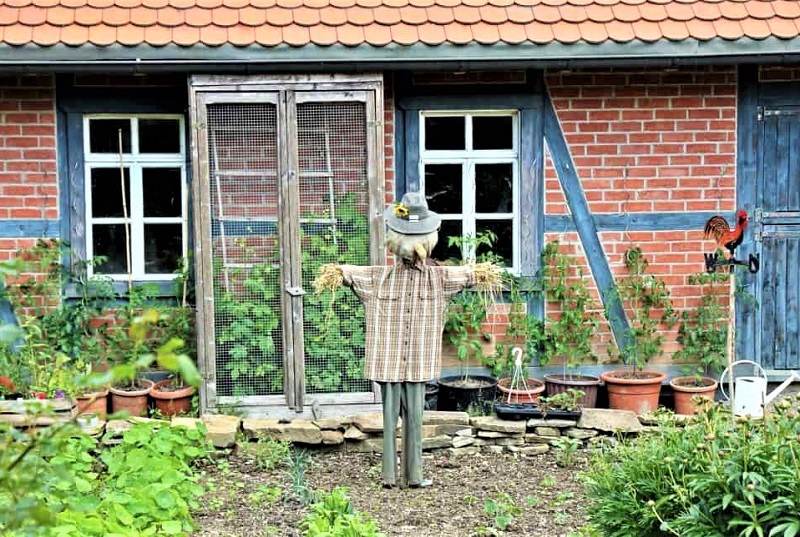
2. Butterfly Netting
Barriers are among the most effective ways to keep birds away. Butterfly netting protects crops from birds while allowing smaller beneficial insects access to your crops to ensure pollination.
Experts suggest that you keep your netting pulled taught, and use netting with holes smaller than one centimeter to avoid injuring birds.
Be sure you invest in high-quality, UV-resistant netting materials when using one of these ways to keep birds away. They may be a bit more expensive, but higher-quality netting will last a lifetime. Cheaper netting tends to fray and deteriorate, becoming a potentially dangerous snag for birds.
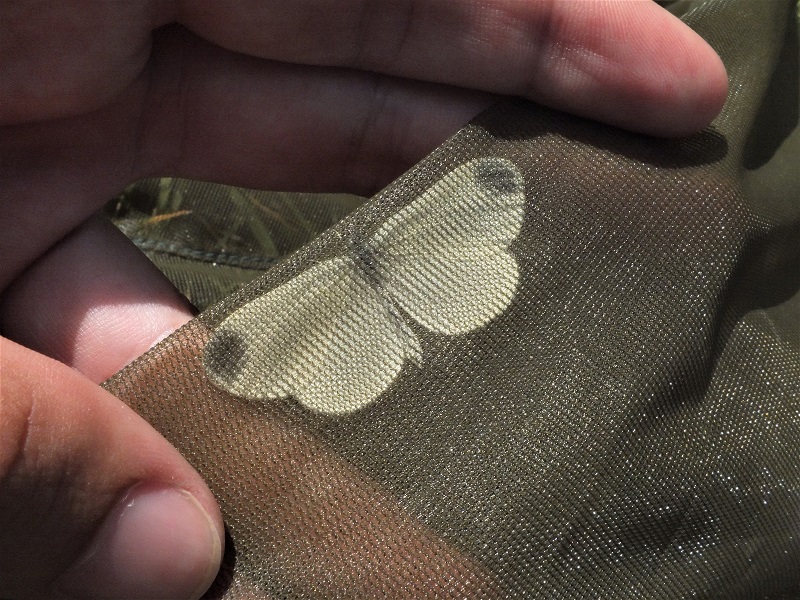
3. Chicken Wire
Charles Barnard, an English ironmonger, invented chicken wire in 1844 as cheap and easy ways to keep birds away. You can use the same principle and material to keep birds out of your vegetable plots.
Pin chicken wire to the ground to protect newly-planted seeds or freshly-sown tubers from birds or even chickens scratching and pecking at the soil. As your seedlings start to grow, you can lift the wire off the ground on stakes for additional protection.
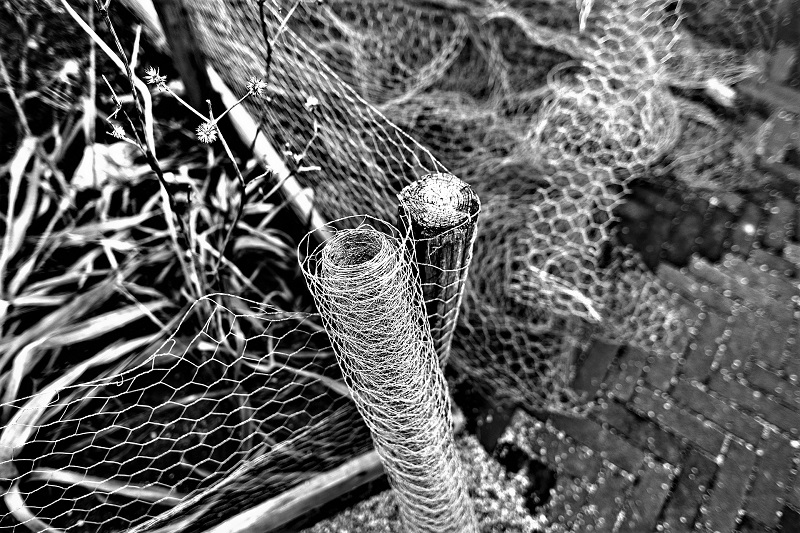
4. Garden Fleece
Gardeners often install garden fleece to protect crops from frost in cold weather months, but you can also use it year-round ways to keep birds away. Drape the fine, white material over your vegetable patch to keep the birds in your neighborhood from harvesting your greens.
Weigh the sides down with rocks or pegs. You can always roll back the fleece when harvest season comes around.
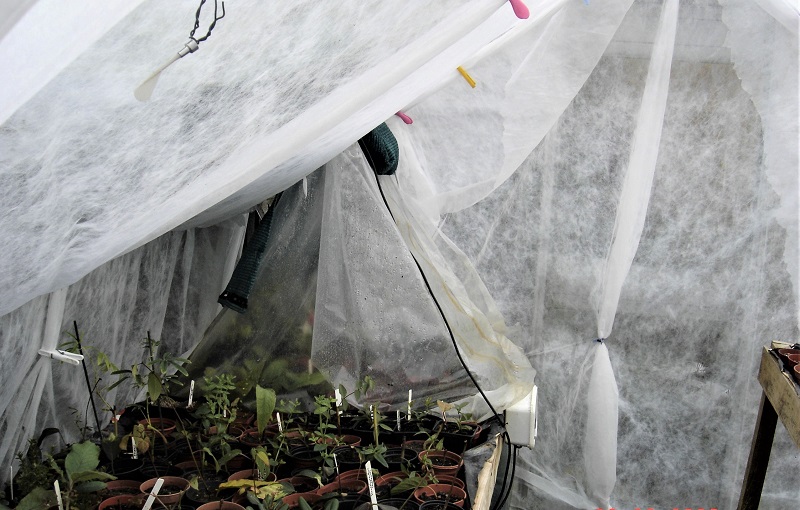
5. Protective Plants
Pigeons, be they wood or rock doves, are rapacious devourers of vegetables in the cabbage family. They are quite persistent and will return to your patch every day until your entire crop is gone. If you don’t have a devoted terrier to shoo them away, you need another plan.
If you are simply not a fan of netting and cages, you can try confusing pigeons by surrounding your cabbage patch with annuals. Plant a dense barrier of calendulas, nemophila, cornflowers, field poppies, and other shorter-growing wildflowers around your plot. Protective floras are one on the best ways to keep birds away.
The look is pleasing, inconspicuous and, as a deterrent against pigeons, the strategy does work. Pigeons do not like to wade through lush flowers. They are naturally wary of what may lurk underneath.
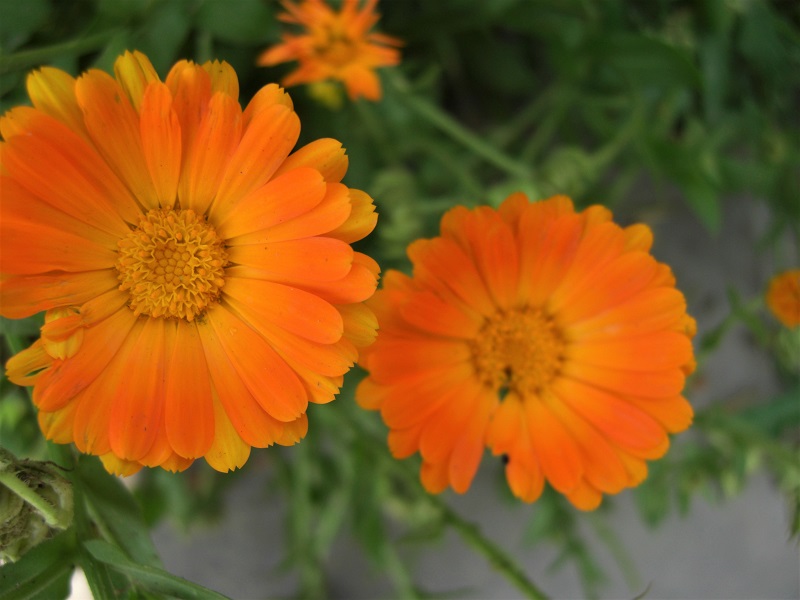
6. Toy Predators
Decoy predators – such as toy owls, falcons, or other birds of prey – can help deter birds from ravaging your garden’s harvests. However, like the scarecrow, if these stationary decoys are not relocated often, birds will soon learn that they are harmless. These scary and cute decorations are ways to keep birds away without harming them or adding more mouths to feed.
Moving your toy owls and decoy predators around in the garden will keep neighborhood birds from swooping in to consume your harvest. Decoys that move or make a sound are even better at deterring birds.

7. Stick Barriers
Push sticks and small twigs into the ground around your vegetable patch to create a small forest of sticks, making them one of the effective ways to keep birds away. Birds will likely notice the menacing sticks barring their way instead of the vegetables you want to protect.
There is a downside to this defense strategy, though. While making a barricade of small sticks may keep the birds out, it also makes harvesting your crops quite difficult. That’s why we recommend this method only for protecting seedlings and young, developing plants.
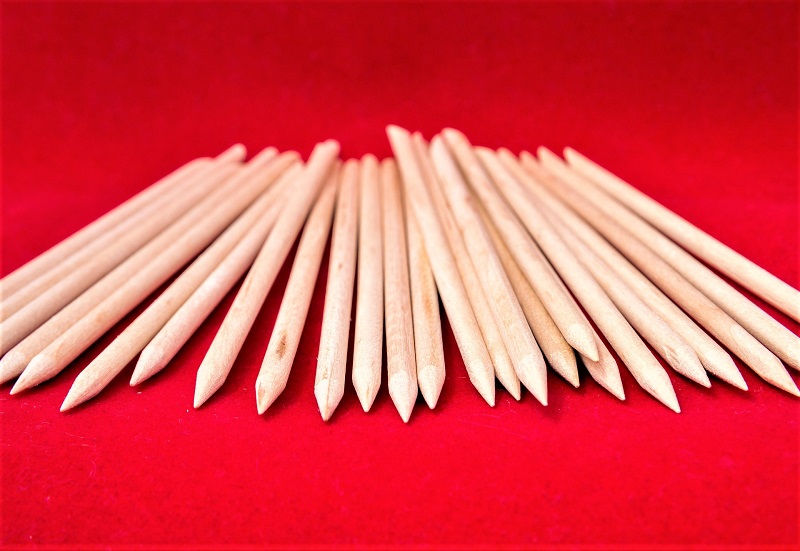
Incorporating Motion in the Garden
Finding ways to keep birds away from your vegetable garden involves creativity and a touch of ingenuity. One effective strategy is incorporating motion into your garden’s landscape. This method utilizes the natural aversion birds have to unexpected movement, making your garden a less attractive place for them to visit.
Let’s look into several motion-based ways to keep birds away that are practical and easy to implement.
Install Pinwheels and Reflective Tapes
Installing pinwheels and reflective tapes is a highly accessible and effective strategy among the various ways to keep birds away from your garden. This method harnesses the power of visual stimuli to create an environment that is visually disturbing for birds, without causing them harm
Birds are naturally cautious creatures, wary of potential environmental threats. The spinning movement of pinwheels, combined with the shimmering light reflected by tapes, mimics the signals of predator activity or other dangers. This illusion triggers birds’ flight response, steering them out of your garden.
Apart from their effectiveness in keeping birds away, pinwheels and reflective tapes add color and movement to your garden, enhancing its overall appearance. You can choose bright-colored pinwheels and tapes that catch the sunlight, creating a dynamic and attractive garden landscape. This method proves that practical solutions for protecting your garden can also contribute to its beauty.
Use Motion-Activated Sprinklers
Utilizing motion-activated sprinklers is among the most innovative ways to keep birds away from your garden. These devices are equipped with sensors that detect movement within a certain range. Upon sensing motion, they release a sudden burst of water.
This unexpected reaction not only startles birds but also creates a psychological barrier, discouraging them from attempting to enter the garden area again. Birds, being creatures of habit, will remember the unpleasant surprise and will likely avoid the area in the future.
The dual functionality of motion-activated sprinklers adds to their appeal. While they serve as a deterrent to unwanted avian visitors, they also play a crucial role in irrigating your garden.
This means you can maintain a healthy, well-watered garden without the need for separate watering activities, saving time and resources. For optimal effectiveness, strategically position the sprinklers around areas most vulnerable or attractive to birds, such as fruit-bearing plants or newly sown seeds.
Hang Moving Objects
Hanging moving objects around your garden is another creative way to keep birds away. Items such as old CDs, aluminum foil strips, or lightweight reflective materials catch the wind and sunlight, creating unpredictable patterns of movement and reflection.
These visual disturbances unsettle birds, who interpret the flashes of light and sudden movements as potential threats. Over time, the continuous presence of these moving objects will create an environment that birds prefer to avoid, protecting your plants from being targeted.
For maximum impact, hang these objects at varying heights and locations throughout the garden, ensuring there are no areas left unprotected. The key to success with this method is unpredictability; by frequently changing the positions and types of objects you use, birds are less likely to become accustomed to them and will continue to steer clear of the area.
Incorporating these motion-based ways to keep birds away can significantly reduce the presence of birds in your vegetable garden. Regularly changing the placement and type of motion devices you use can maintain an effective deterrent against birds, ensuring your garden remains productive and undisturbed.
Chemical Repellents: Are They an Option?
Exploring the use of chemical repellents is another avenue in the search for ways to keep birds away from your garden. While physical barriers and visual deterrents are often preferred for their simplicity and eco-friendliness, chemical repellents offer a different approach. These substances are designed to create an unwelcoming environment for birds without causing them harm, making your garden less attractive to these feathered visitors.
Understanding Chemical Repellents
Understanding chemical repellents is essential when exploring ways to keep birds away from your garden. These repellents are designed to create an inhospitable environment for birds without causing them harm, targeting their senses to discourage them from landing, feeding, or nesting in treated areas.
Delving deeper into how chemical repellents work, their variety, and the considerations for use can help gardeners make informed decisions about incorporating these solutions into their bird deterrent strategies.
Chemical repellents primarily focus on altering the sensory experiences of birds. By making the taste or smell of plants unappealing, these repellents deter birds from eating fruits, vegetables, and other garden plants.
Some repellents might also irritate the birds’ feet or feathers, discouraging them from perching or nesting in treated areas. The goal is to gently modify the behavior of birds without causing them distress or harm, leveraging their natural avoidance behaviors to protect your garden.
When considering chemical repellents as ways to keep birds away, evaluating the specific needs of your garden and the types of birds you’re dealing with is crucial. Natural and organic options are generally safer and more environmentally friendly, making them suitable for gardens where edibility and eco-sustainability are priorities. However, in areas with more persistent bird problems, a stronger, synthesized repellent might be necessary, provided it’s used responsibly and selectively.
Types of Chemical Repellents
When exploring ways to keep birds away from your garden, understanding the different types of chemical repellents available can be a game-changer. These repellents are designed to target birds’ senses directly, making your garden an unattractive place for them to feed, perch, or nest. Let’s delve deeper into the types of chemical repellents, focusing on taste aversions and scent deterrents, and how they function as effective ways to keep birds away.
Taste aversions are among the most straightforward ways to keep birds away from your prized plants. By applying these substances directly to the foliage or fruit of your garden plants, you create a barrier of taste that is highly unpleasant to birds.
These repellents can range from natural, organic compounds to more synthetic formulations, each designed to impart a bitter or otherwise unfavorable flavor to treated plants. The beauty of taste aversions lies in their specificity; they target the birds’ taste receptors directly, discouraging them from eating without harming them physically. This method allows for the protection of crops in a humane and effective way, ensuring your garden remains productive and bird-free.
Scent deterrents offer another innovative way to keep birds away, capitalizing on their sensitive sense of smell. These repellents work by emitting odors that are unpleasant to birds but are often completely undetectable to humans. This makes scent deterrents a particularly discreet option for garden protection, ideal for areas where visual deterrents might be undesirable.
From essential oils derived from plants known to repel birds to more scientifically engineered scents, these repellents can be applied around the perimeter of a garden or directly on plants. The key to their effectiveness is in their ability to create an olfactory barrier that birds are eager to avoid, thereby safeguarding your garden from their unwanted attention.
Safety and Environmental Impact
Choosing chemical repellents that are labeled as safe for use in gardens and around wildlife is the first step in ensuring your garden’s protection without compromising its inhabitants’ health. Natural and organic options are often recommended as ways to keep birds away because they are less likely to cause harm to birds, beneficial insects, pets, and humans.
These products are derived from inherently less toxic substances and are designed to break down more quickly in the environment, reducing the risk of long-term pollution or harm to soil and water quality.
It is also vital to follow the manufacturer’s instructions meticulously for both application and reapplication of the repellents. This diligence ensures that the repellents maintain their effectiveness while minimizing potential environmental or health risks. Proper application techniques can prevent overuse or accidental exposure to non-target areas, further safeguarding the ecosystem in your garden.
Efficacy and Application
For chemical repellents to be one of the effective ways to keep birds away, their application must be consistent and in line with the product’s guidelines. The success of these repellents often depends on various factors, including the types of birds you’re aiming to deter, the size of the area you’re protecting, and the specific characteristics of the repellent used.
Some birds may become accustomed to the presence of a particular repellent over time. This adaptation can diminish the product’s effectiveness, making it crucial to rotate between different repellents or combine chemical methods with other deterrent strategies, such as physical barriers or visual scares.
Moreover, understanding the behavior and feeding patterns of the birds you’re trying to deter can enhance the effectiveness of chemical repellents. By targeting the application of repellents to the most vulnerable and attractive areas of your garden, you can maximize the protective barrier these products provide.
This targeted approach, coupled with an awareness of the repellent’s active duration and the need for timely reapplication, can offer a sustainable and effective way to keep birds away from your garden.
Chemical repellents can be a part of the ways to keep birds away from your garden, especially when used judiciously and as a complement to other bird deterrent strategies. By choosing safe, environmentally friendly options and applying them correctly, gardeners can protect their plants from avian pests while ensuring the well-being of the garden ecosystem
Making a Difference
A new study, which analyzed decades of data on North American birds alone, estimates that the continent’s bird populations have fallen by 29 percent since 1970. That’s almost three billion fewer individuals than there were five decades ago. We cannot emphasize how important it is to find safe effective ways to keep birds away from our garden.
Each of us can make a difference with everyday actions that together can save millions of species by utilizing safe effective ways to keep birds away from our garden. The non-lethal and essentially harmless methods we’ve outlined above will help protect your crops even as they keep avian populations from further plummeting.



